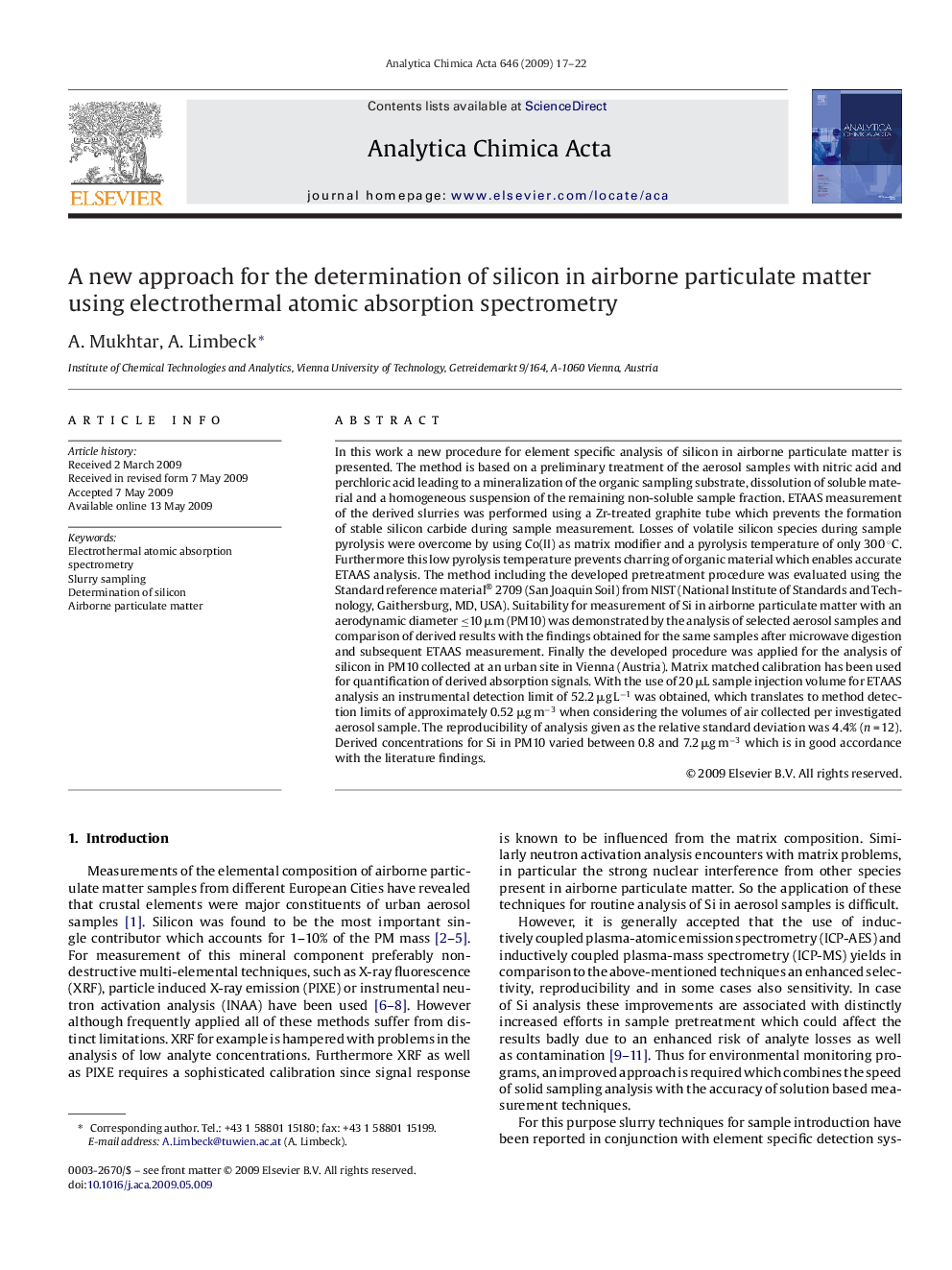| Article ID | Journal | Published Year | Pages | File Type |
|---|---|---|---|---|
| 1168350 | Analytica Chimica Acta | 2009 | 6 Pages |
In this work a new procedure for element specific analysis of silicon in airborne particulate matter is presented. The method is based on a preliminary treatment of the aerosol samples with nitric acid and perchloric acid leading to a mineralization of the organic sampling substrate, dissolution of soluble material and a homogeneous suspension of the remaining non-soluble sample fraction. ETAAS measurement of the derived slurries was performed using a Zr-treated graphite tube which prevents the formation of stable silicon carbide during sample measurement. Losses of volatile silicon species during sample pyrolysis were overcome by using Co(II) as matrix modifier and a pyrolysis temperature of only 300 °C. Furthermore this low pyrolysis temperature prevents charring of organic material which enables accurate ETAAS analysis. The method including the developed pretreatment procedure was evaluated using the Standard reference material® 2709 (San Joaquin Soil) from NIST (National Institute of Standards and Technology, Gaithersburg, MD, USA). Suitability for measurement of Si in airborne particulate matter with an aerodynamic diameter ≤10 μm (PM10) was demonstrated by the analysis of selected aerosol samples and comparison of derived results with the findings obtained for the same samples after microwave digestion and subsequent ETAAS measurement. Finally the developed procedure was applied for the analysis of silicon in PM10 collected at an urban site in Vienna (Austria). Matrix matched calibration has been used for quantification of derived absorption signals. With the use of 20 μL sample injection volume for ETAAS analysis an instrumental detection limit of 52.2 μg L−1 was obtained, which translates to method detection limits of approximately 0.52 μg m−3 when considering the volumes of air collected per investigated aerosol sample. The reproducibility of analysis given as the relative standard deviation was 4.4% (n = 12). Derived concentrations for Si in PM10 varied between 0.8 and 7.2 μg m−3 which is in good accordance with the literature findings.
